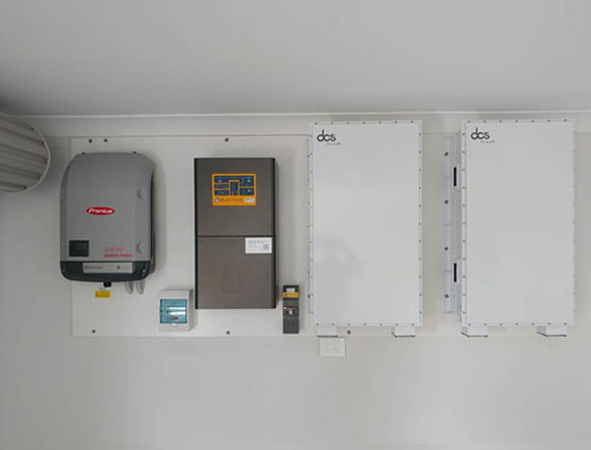Imagine waking up each morning to the gentle hum of nature, a sunrise painting your surroundings in hues of gold, and knowing that every ounce of energy powering your home comes from the sun. In an era where sustainability is more than just a buzzword, off-grid solar systems illuminate paths toward energy independence and environmental stewardship. Whether you’re dreaming of a cozy cabin in the woods or simply looking to decrease your carbon footprint while staying connected, this comprehensive guide will walk you through everything you need about stand alone off grid solar systems.
Introduction to off-grid solar systems
Imagine waking up to the sound of birds chirping and sunlight streaming through your window, knowing that the sun itself meets your energy needs. Off-grid solar systems offer this freedom and more. They allow you to harness renewable energy, reducing reliance on traditional power sources while minimizing your carbon footprint.
With increasing people seeking self-sufficiency, stand-alone off-grid solar systems have become a popular choice for homeowners and adventurers alike. Whether living in a remote location or wanting to break free from utility bills, these systems can provide reliable power with minimal environmental impact. Let’s explore how they work and the incredible benefits they offer.
Benefits of using Stand Alone Solar Systems
Stand alone solar systems provide energy independence. You generate your power, free from reliance on utility companies. This autonomy is especially beneficial in remote areas where traditional electricity may not reach. Another key advantage is the environmental impact. Harnessing sunlight reduces carbon emissions and contributes to a greener planet—a step towards sustainable living.
Cost savings also play a significant role. While the initial investment can be higher than that of grid-tied systems, long-term savings on electric bills make it worthwhile over time. Flexibility offers further appeal. These systems can be tailored to meet specific energy needs for a tiny cabin or an entire homestead.
Finally, they are resilient against power outages. You need not worry about blackouts; as long as the sun shines, you have power at your fingertips.
Components of a Stand Alone Solar Power System
At the heart of a stand alone solar power system are solar panels. These devices capture sunlight and convert it into electricity. Their efficiency determines how much energy you can generate. Next up are batteries, essential for storing that energy. When the sun isn’t shining, these batteries ensure you still have power on demand. Choosing the right type and capacity is crucial for meeting your needs.
Then there’s the charge controller, which acts as your system’s traffic cop. It regulates voltage and current from the panels to prevent overcharging or draining your batteries too profoundly. This component ensures longevity and optimal performance across all parts of your setup. These components work harmoniously to provide reliable, independent energy solutions explicitly tailored for off-grid living.
Sizing and designing your solar system based on energy needs
Determining the right size for your off-grid solar system is crucial. Start by assessing your energy consumption. Look at monthly utility bills or use a home energy monitor to track usage patterns. Next, list all devices you plan to run on solar power. Please pay attention to their wattage and daily operational hours. This will give you a clearer picture of your total daily energy needs.
Once you have that information, consider peak sunlight hours in your location. These vary seasonally and impact how much energy your panels can produce. Finally, some buffer capacity for cloudy days or unexpected demands should be considered. Designing with flexibility ensures reliability and peace of mind as you effectively embrace renewable energy sources.
Installation process and tips for Off Grid Stand Alone Solar Power System
Installing an off grid stand alone solar power system can be an exciting project. Please start by selecting the ideal location for your solar panels, ensuring they receive maximum sunlight throughout the day.
Once you have your setup ready, connect the solar panels to the charge controller. This device regulates energy flow into your battery storage, preventing overcharging and damage. After wiring everything correctly, secure your batteries in a ventilated area. Regular inspection is key—check all connections periodically for wear or corrosion.
Maintenance doesn’t stop at installation. Clean your panels several times a year to remove dust and debris. This simple task helps maintain efficiency. Monitor battery levels regularly as well; this ensures optimal system performance. You’ll enjoy reliable energy independence for years by staying proactive about maintenance.
Advantages of having a Stand Alone Solar System
There are numerous benefits to having a stand-alone solar system, also known as an off-grid solar system. These systems are designed to operate independently from the traditional power grid, making them ideal for remote locations or areas with unreliable utility services. This section will explore the advantages of choosing a stand alone solar system for your energy needs.
1. Cost Savings
One of the most significant advantages of having a stand-alone solar system is cost savings over time. While the initial investment may be higher than connecting to the grid, you will save money in the long run by not paying monthly electricity bills. With a stand-alone solar system, you become your utility company and generate free electricity from sunlight.
2. Energy Independence
Having a stand-alone solar system means being completely independent from outside sources for your energy needs. This is especially beneficial for remote areas where access to traditional power grids may be limited or non-existent. By harnessing the sun’s energy, you can have reliable and constant access to electricity without relying on fossil fuels or other non-renewable energy sources.
3. Environmental Impact
Switching to a stand-alone solar system has significant environmental benefits as well. Solar energy is clean and renewable, meaning it does not produce harmful emissions that contribute to climate change or air pollution as traditional energy sources. You are helping protect our planet for future generations by reducing your carbon footprint and reliance on non-renewable resources.
4. Versatility and Flexibility
Stand-alone solar systems offer versatility and flexibility in their design and installation options, making them suitable for various applications such as residential homes, cabins, RVs, boats, and commercial buildings. They can easily be customized based on individual energy needs and expanded if future requirements change.
Case studies of successful off-grid solar installations
Across the globe, numerous families and businesses thrive off-grid. One notable example is a remote cabin in Alaska. Equipped with solar panels, it generates enough energy to power all household appliances year-round.
In another instance, an eco-lodge in Costa Rica has successfully harnessed solar energy for its operations. This sustainable approach attracts environmentally conscious tourists while significantly reducing operational costs.
A small farm in Australia showcases how off-grid systems can enhance agricultural productivity. By utilizing solar power to run irrigation pumps and refrigeration units, the farmer ensures consistent crop yields regardless of grid reliability.
These examples highlight diverse applications of stand-alone solar systems. Each installation demonstrates innovation tailored to specific needs and environments. The transition to renewable energy is not just practical; it’s also transformative for communities everywhere.
Conclusion
The potential of stand alone off grid solar systems is vast, offering an enticing glimpse into a sustainable future. As technology evolves, these systems become more efficient and accessible. With rising concerns about energy independence and environmental impact, the appeal of harnessing the sun’s power grows stronger. More people are embracing this renewable energy solution for their homes and businesses. The benefits—financial savings, reduced carbon footprint, and reliability—are hard to ignore. Successful case studies showcase innovative designs that cater to specific needs while overcoming challenges often associated with off-grid living.
FAQs
1. What is a stand alone off grid solar system?
A stand-alone off-grid solar system is a self-sufficient energy system that uses solar panels to generate electricity without being connected to the traditional power grid. It consists of solar panels, batteries, charge controllers, inverters, and other components to store and convert solar energy into usable electricity.
2. How does a stand-alone off-grid solar system work?
The solar panels in the system collect sunlight and convert it into direct current (DC) electricity. This DC power is then sent to the charge controller, which regulates the flow of electricity to the batteries for storage. The batteries store the excess energy produced during peak sunlight hours and release it when no sunlight is available. The inverter then converts this stored DC power into alternating current (AC) electricity, which can be used to power household appliances.
3. What are the advantages of using a stand-alone off-grid solar system?
One of the main advantages of using an off-grid solar system is its independence from traditional power grids. This makes it ideal for remote locations or areas with unreliable grid connections. Off-grid systems also have lower maintenance costs as they do not rely on external suppliers for fuel or repairs.
| Related Business Listings |
| Contact Directory |
| Local Business Profiles |




